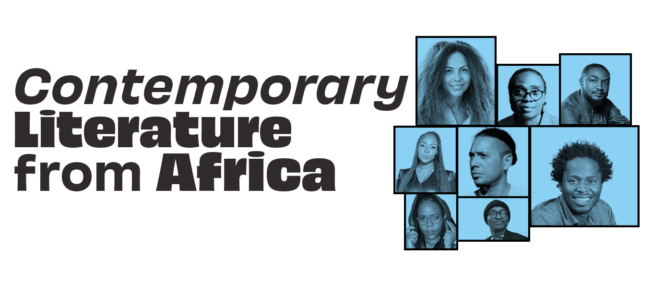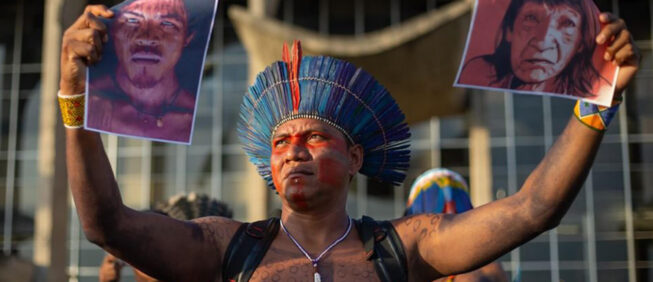More expectations, less rights
Experiences of Ethiopian migrant children in South Africa
Mackenzie Seaman and Henrietta Nyamnjoh
| Ethiopia |
September, 2023
Risky journeys
Out of Ethiopia’s circa 100 million people, more than 3 million live abroad. While Ethiopians had traditionally migrated to Kenya and Sudan, today the majority of Ethiopians travelling “South” go to South Africa. There are no official estimates on the number of Ethiopians in South Africa. However, experts believe that the number is increasing exponentially, many arriving irregularly and undocumented.
The journey from Ethiopia to South Africa forms part of the “Southern Route” which runs from the Horn of Africa to southern Africa and mainly crosses through five countries, specifically Kenya, Tanzania, Malawi, Mozambique and Zimbabwe. Ethiopian migrants often embark on this journey in search of better livelihood opportunities and to fulfil their migration aspirations. Although common, the route is not easy. Ethiopians’ journeys along the Southern Route most often end in South Africa and are marked by smuggling and trafficking. The journey also involves the risk of imprisonment, deportation, exploitation and abuse, and death.
In December 2022, 27 bodies of Ethiopian migrants were found on the outskirts of Lusaka, the capital of Zambia, following previously reported incidents. Earlier in 2022, 30 Ethiopians were discovered in a mass grave in Malawi. In March 2020, 64 Ethiopian men were found dead from asphyxiation in a sealed shipping container in Mozambique.
Although much attention focuses on the dangers of “North”-ward movements which end on the Southern borders of Europe and the European Union, these Southern movements are common and equally fraught with risks. It is estimated that more than 900 Ethiopians have died on migration routes since 2014. This likely represents a vast undercount.
Children on the move
Hidden within these statistics are the experiences of children. The population of Ethiopia is incredibly young. It is estimated that 45 percent of its population is under the age of 15 and 71 percent are under the age of 30 – in line with statistics for sub-Saharan Africa and the Horn of Africa more generally.
Much of the migration in the region is also undertaken by youth. According to estimates, Africa has the youngest median age of migrants globally. While there are no specific statistics on child migrants in Ethiopia, nor for Ethiopian migrants more generally, the migration of children, both unaccompanied and within families, is common and increasing.
The perception from communities on child migration is complex. In Ethiopia, children may reach social adulthood prior to the age of 15. While legally considered children, the communities do not view this movement of children as child migration per se. Both Amharic and local dialects have words which categorize children differently than Western legal definitions. Migration is also seen as a fundamental rite of passage which children undertake to become adults.
Uneasy reception
The difficulties Ethiopian children face continue after the migration journey. In South Africa, both those who migrated and those born in the country to Ethiopian parents, face challenges accessing their rights. Often, they are granted access to second-class documentation or are denied access to proper documentation entirely. Ethiopian children born to parents with asylum-seeker or refugee status take on the same status as that of the mother. However, some of those born in South Africa continue to struggle to obtain documentation, threatening them with statelessness.
The stories collected through MIDEQ Hub, a global research consortium which unpacks the complex and multi-dimensional relationships between migration and inequality in the Global South, shed light on these children’s difficult experiences accessing their rights in South Africa.
Mia was born in South Africa to Ethiopian parents. Only familiar with South Africa, Mia’s view of Ethiopia is based on stories from her parents and the occasional calls back home. Her accent is South African, she speaks fluent Afrikaans and her world view is South African. Despite this, she does not have the South African citizenship. While Mia did have a temporary identity document, Covid-19 prevented her from renewing it. As a result, at the time of interview she was newly undocumented.
The consequences of Mia’s lack of documentation reverberate throughout her life. She cannot access her Matric (high school leaving certificate) as the digital system requires a valid identity document. In turn, she also cannot register for tertiary education. Desperately attempting to secure proper documentation from the Department of Home Affairs and Refugee Office, she had asked her school principal to provide her with the results informally – which he denied. Consequently unable to pursue her studies, Mia instead was working in her father’s shop when interviewed but maintained the desire to continue her education.
Unlike Mia who was born in South Africa, Ephraim migrated to South Africa at the age of 14 to reunite with his parents, as well as to continue his studies to, as he put it, “learn and speak good English.” However, he gave up on education because of his lack of proper documentation. “I went to one school with my father…and the first thing they asked for was my documents... [which] I didn’t have.” While he also described being intimidated by the standard of education, his choice to forgo schooling was ultimately due to documentation challenges. “Even though I was scared, I still wanted to go to school, but I did not have documents.”
Not only does Ephraim lack the necessary documentation to fully access education and other rights in South Africa, but, in contrast to Mia, his limited English and education exacerbated his difficulties in navigating the complex bureaucracy in South Africa for Ethiopians. Today, like most unaccompanied child migrants from Ethiopia in South Africa, Ephraim lives as an undocumented migrant in a township, working informally in one of his father’s spaza shop.
Increased expectations and parental roles
Children often serve as cultural intermediaries for migrant families. They navigate complex legal systems, translate for family members, and often take on parenting roles for children when interfacing with institutions, like schools. Children who migrate without their families often face the burdens of migration and adaptation alone.
In South Africa, children of Ethiopian similarly occupy important positions of power and responsibility within their household, such as navigating the relationship between the household and the Department of Home Affairs and Refugee Office, and the relationship between parents and school governing bodies. MIDEQ research conducted in South Africa underlines the parental roles children in migrant households often take on.
Samuel arrived South Africa in 2012 at the age of 12 and was immediately enrolled in school. He is the eldest in a family of five children. At school, he struggled to adjust within the educational system due to a lack of proficiency in English. However, he soon began to read and speak English fluently and became the interpreter between his parents’ and school officials. By 15, he started attending school meetings on behalf of his parents. At 17, he was the main decision-maker for his siblings while his parents focused on making money to send back home. “Ever since I started high school, I've been parenting myself and my siblings.”
Unlike Mia and Ephraim, Samuel was able to secure documentation, complete high school and obtain his Matric certificate. However, he could not continue on to university because he needed to register as an international student – given his Ethiopian citizenship – which comes with huge fees.
Performing such “parental” tasks as Samuel described is normal in many migrant households. While it may juxtapose with the idealized version of childhood which policymakers and programmers envision and advocate for – it is not necessarily ubiquitously negative. Children in South Africa and Ethiopia often reach a social adulthood prior to attaining 18 years of age, making efforts to restore “lost childhoods” poorly conceived. While children can suffer negatively from the pressure to take on more roles, children like Samuel also can find empowerment in completing these tasks. It can be an identity-forming experience.
Proposed solutions for some
The experiences of Mia, Ephraim and Samuel underline how persistent documentation challenges deny children of Ethiopian origin access to education in South Africa. Such experiences have been well-documented in other contexts in the Global North as well, particularly in the United States.
Despite the commonality of such challenges, the right to education of migrants and children, irrespective of their legal status, is guaranteed under international law. This is enshrined in both human rights law and migrant- and child-specific treaties, such as the Convention on the Rights of the Child, the United Nations Convention Relating to the Status of Refugees and its Protocol, the Global Compact for Safe, Orderly, and Regular Migration, and the Global Compact on Refugees – all of which South Africa has acceded to or approved.
However, there has recently been progress in South Africa. Following multiple lawsuits, as of June 12, 2023, adults born to refugees or asylum seekers are entitled to naturalization proceedings. These individuals must meet several requirements, such as speaking at least one official language and be older than 18.
This new regulation gives renewed hope to many adults born to Ethiopian parents who had previously languished with poor or no documentation. However, children, specifically those who migrated to South Africa or who were born in South Africa to undocumented parents, continue to remain in a state of limbo, facing profound legal discrimination and persistent educational barriers.
However, the stories encountered during the MIDEQ research demonstrate that there are many immediate and practical solutions which can be implemented.
First, a lynchpin in providing Ethiopian children who migrate to South Africa, as well as those born in South Africa to Ethiopian parents, equal access to rights, especially education, during childhood is birth certificates. South African birth certificates thus need to be provided to every child born in South Africa without discrimination. For those born in Ethiopia, a mechanism needs to be established which enables such children’s Ethiopian birth certificates to be recognized so they can access to further documentation – such as the 13-digit identity card.
Second, due to lapses in the renewal of identity documents in light to Covid-19, children are newly being threatened with becoming undocumented. Such lapses need to be forgiven and not be used as a barrier for gaining access to up-to-date identity documents. Documents which expired during the pandemic should thus be still seen as valid when applying for renewals.
Third, the highly digitized nature of retrieving high school exit certificates prevents children from accessing their results. There thus needs to exist a non-digital and formalized method for retrieving results which is accessible through all government-issued identity documents – not just a South African birth certificate and 13-digit identity card.
Fourth, for Ethiopian children educated in South Africa, requiring that they pay the international fees at universities prevents such children from reaping the full benefits of their migration. Citizenship should not be the determinant of such fees but rather whether children graduated from South African high schools.
Finally, many children from Ethiopia migrate to South Africa irregularly and thus are undocumented. Even some born in South Africa are at times undocumented, particularly if born to undocumented Ethiopian parents. There thus needs to be continued concerted efforts by NGOs and the government to secure documentation for those under the age of 18. Supporting children in applying for asylum to receive refugee status upon arrival in South Africa, transnational efforts to provide children their Ethiopian documentation, and widespread efforts to provide Ethiopian children with South African birth certificates at birth can facilitate access to documentation. However, broader policies by the South African state are required to address this group’s undocumented status.
Gap in expectations and reality
Despite legal challenges, Ethiopian parents continue to view their children as the springboard for lifting the household out of poverty, as do children themselves. However, without proper documentation, children struggle to enter public schools, the labor market, and access certain social services. This thus often means that migration is not necessarily providing Ethiopian migrant children in South Africa the plethora of opportunities once envisioned. For many, the perceived benefits of migration to South Africa, such as better livelihood and educational opportunities, remains elusive.
However, the concrete proposals outlined above can provide much needed remedies and relief to the plight of such children. Inherent in these proposals is an ignited political will to address these children’s challenges. Persistent efforts in South Africa to document and call attention to these children’s experiences, as well as all children with migration background, thus should continue.

Mackenzie Seaman | AUSTRIA |
Researcher for the Childhood Inequalities work package with MIDEQ.

Henrietta Nyamnjoh (PhD) | CAMEROON |
Researcher with the MIDEQ Hub at the University of Cape Town.







